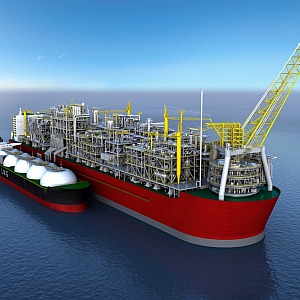Gas ideas floated while coal jobs plummet
 BHP has thrown its support behind floating LNG processing plants, ending years of speculation and indicating that onshore jobs will be fewer in the future.
BHP has thrown its support behind floating LNG processing plants, ending years of speculation and indicating that onshore jobs will be fewer in the future.
BHP’s petroleum head Tim Cutt said earlier this year that he preferred onshore options for developing LNG from the $10 billion FLNG joint venture between BHP and ExxonMobil off Scarborough, in Western Australia.
But Mr Cutt appears to have backflipped on his earlier view, according to reports in The West Australian.
“We've looked at all the different technologies with ExxonMobil and we're now fully aligned with ExxonMobil,” Cutt said.
"FLNG is the direction we're heading. We've got a lot of confidence in the technology.
"The fact the gas is dry actually helps floating technology quite a bit. The quality of the material work is good and ExxonMobil is an excellent operator.
“So we know we’ll go forward.”
The decision comes just a week after BHP announced it was sacking 700 workers from coal mines in Queensland.
If the new FLNG project continues as planned it will become the world’s largest floating gas facility, measuring an incredible 495 metres long, 75 metres wide and with the capability to process up to seven million tonnes of LNG per year.
The project is expected to involve the drilling of 12 wells in two phases, beginning with the sinking of seven over a period from 2018 to 2019.
Other firms are preparing to leap into the age of offshore gas, with Shell building the huge Prelude structure and Santos looking at the development of a FLNG vessel for the Bonaparte Basin, 250 kilometres west of Darwin.








 Print
Print